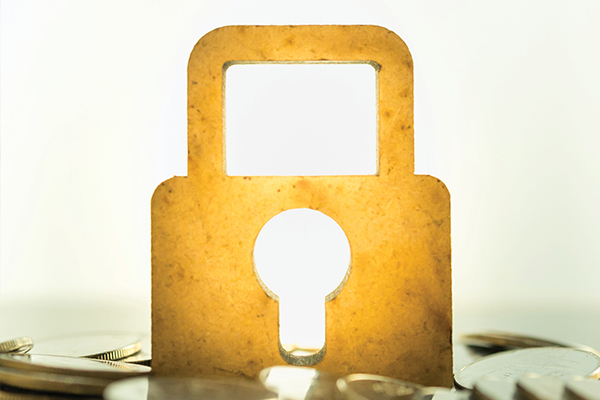Safe Travels: How to Keep Your Finances Safe While Traveling
Aug. 21, 2025
Trave plans on the horizon? Whether you’re jet-setting across the globe, road-tripping with friends or soaking up sun at the local beach, you don’t want to bring home a financial headache.
Travel can expose you to a host of financial risks, including stolen credit cards, hacked accounts, shady ATMs and travel scams. However, with a little awareness and preparation, you can keep your finances as secure as your passport.

Here are 10 tips for keeping your finances safe during you trip.
1. Notify your credit union before you go
Before you hop on a plane or cross state lines, let Forrit Credit Union know! You can notify us through Online or Mobile Banking or give us a call at 503-275-0300. This prevents your card from being flagged or frozen for suspicious activity while you’re trying to pick up dinner in another country.
2. Use credit over debit
Credit cards offer stronger fraud protection than debit cards, and they don’t give scammers direct access to your checking account. If your credit card is compromised, you can always dispute the charges, but if your debit card is hacked, the money is gone until your financial institution investigates.
Pro tip: Carry more than one card in separate places, just in case one gets lost or compromised.
3. Avoid public Wi-Fi for financial transactions
That free airport or café Wi-Fi may be convenient, but it’s also a hotspot for hackers. Never access checking accounts, make purchases or enter personal data over unsecured public networks. If you must connect to one, use a VPN (Virtual Private Network) to encrypt your data.
4. Beware of skimming devices
Skimming devices are small tools that criminals attach to ATMs and gas pumps to steal your card info. When using an ATM, stick to machines inside financial institutions or well-lit, secure areas. Wiggle the card reader — if it feels loose or bulky, walk away. It’s also a good idea to ensure the keypad is in a condition that’s similar to the rest of the machine; if it appears to be newer, it may have been tampered with. Finally, cover the keypad with your hand while entering your PIN.
5. Don’t post travel plans publicly
It might be tempting to share your every move on social media, but announcing that you’re on vacation also tells potential thieves your house is empty — and that you’re distracted. Save the photo dumps for after you get home.
6. Carry a mix of payment methods
It’s best to bring a combination of cash, credit and debit cards with you on vacation, especially when traveling internationally. Some places may not accept cards, and others may not take cash. Keep a small stash of emergency cash separate from your wallet in case it’s lost or stolen.
7. Set up transaction alerts
Most financial institutions and credit card companies allow you to set real-time transaction alerts via text or mobile app. This way, you’ll know immediately if there’s any suspicious activity on your account. As a bonus, it’ll also help you keep track of your spending while on vacation.
8. Limit what you carry
Leave unnecessary cards, checkbooks and documents at home. Carry only what you need: one or two credit cards, photo ID and insurance info. Keep photocopies or digital backups of these items stored securely, preferably in secure, password-protected cloud storage.
9. Be cautious with currency exchange
Avoid airport kiosks or hotel front desks for currency exchange as they tend to have poor rates and high fees. Instead, withdraw local currency from a bank-affiliated ATM or exchange money at a reputable financial institution in your destination country.
10. Monitor accounts during and after travel
Don’t let your guard down, even after you return home. Monitor your accounts regularly for any unauthorized transactions. Sometimes, fraud doesn’t happen immediately; instead, criminals wait several weeks before using your stolen information.
Safe travels and smart spending!

Forrit Team's Favorite Portland Holiday Spots
Just For Fun
Nov. 19, 2025

Your Paycheck-to-Paycheck Holiday Survival Guide
Educational
Nov. 17, 2025







